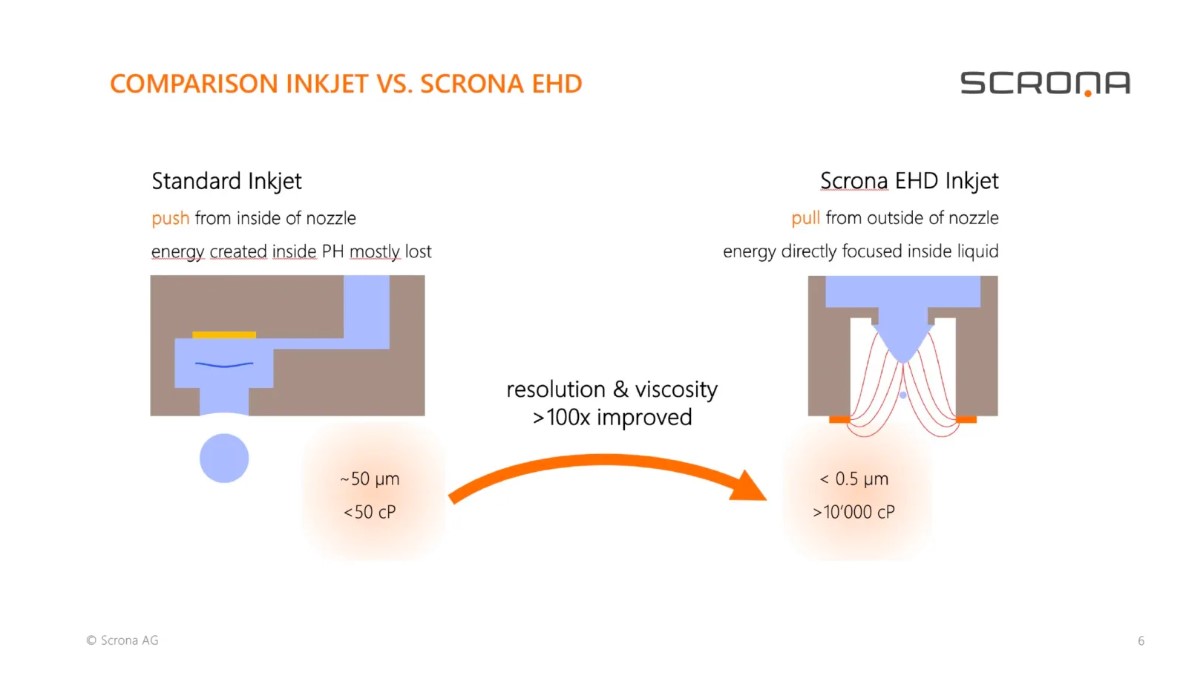Remember Scrona AG, that AM startup from Switzerland that snagged a Guinness World Record for the “smallest inkjet-printed color image” in 2015? That same company secured $9.6M in 2022 to further develop ultra-precise electronics 3D printing technology and then disappeared from the radars. Well, it has recently found a new application for its electrohydrodynamic (EHD) inkjet printing – a process that I have found a bit intriguing given the lack of applications demonstrated so far.
As a reminder, the company develops a multi-nozzle electrostatic printhead for mass manufacturing that would achieve unprecedented printing resolution in the sub-micrometer range.
Through a collaboration with Avantama – an expert in high-tech materials for electronics, Scrona AG confirms there are benefits in combining the inkjet process with high-patterning resolution.
According to Scrona, this collaboration would drive a new generation of efficient and cost effective MicroLED displays, while also increasing color purity and brightness, and improving overall pixel production tact time.
“We continue to find new applications of EHD that will meet the demands of the industry by offering an additive, completely waste-free process with higher resolution capabilities than lithography patterning,” said Dr. Patrick Galliker, co-founder and CEO of Scrona. “While conventional inkjet printheads require inks of low viscosity, Scona has already demonstrated printing inks 1,000 times what they can process, paving the way for a much more efficient generation of MicroLED displays.”

Scrona drew attention because of a promise: the ability to process materials that cannot be processed with other printheads today. Their ability to process MicroLED materials from Avantama is a great milestone. We now hope this will lead to more tangible applications.
“Conventional inkjet printing is not a viable option for emerging MicroLED displays because they use much smaller pixels than QD-OLED displays,” said Dr. Norman Lüchinger, co-founder and CTO at Avantama. “By partnering with Scrona, we have been able to demonstrate that an OD greater than 1 can be obtained with a perovskite QD layer thickness below 2µm. This can reduce the printhead nozzle count by a factor of five and deliver a thin QD layer that improves the overall efficiency and production tact time of MicroLED display technology.”
Remember, you can post job opportunities in the AM Industry on 3D ADEPT Media free of charge or look for a job via our job board. Make sure to follow us on our social networks and subscribe to our weekly newsletter : Facebook, Twitter, LinkedIn & Instagram ! If you want to be featured in the next issue of our digital magazine or if you hear a story that needs to be heard, make sure to send it to contact@3dadept.com


